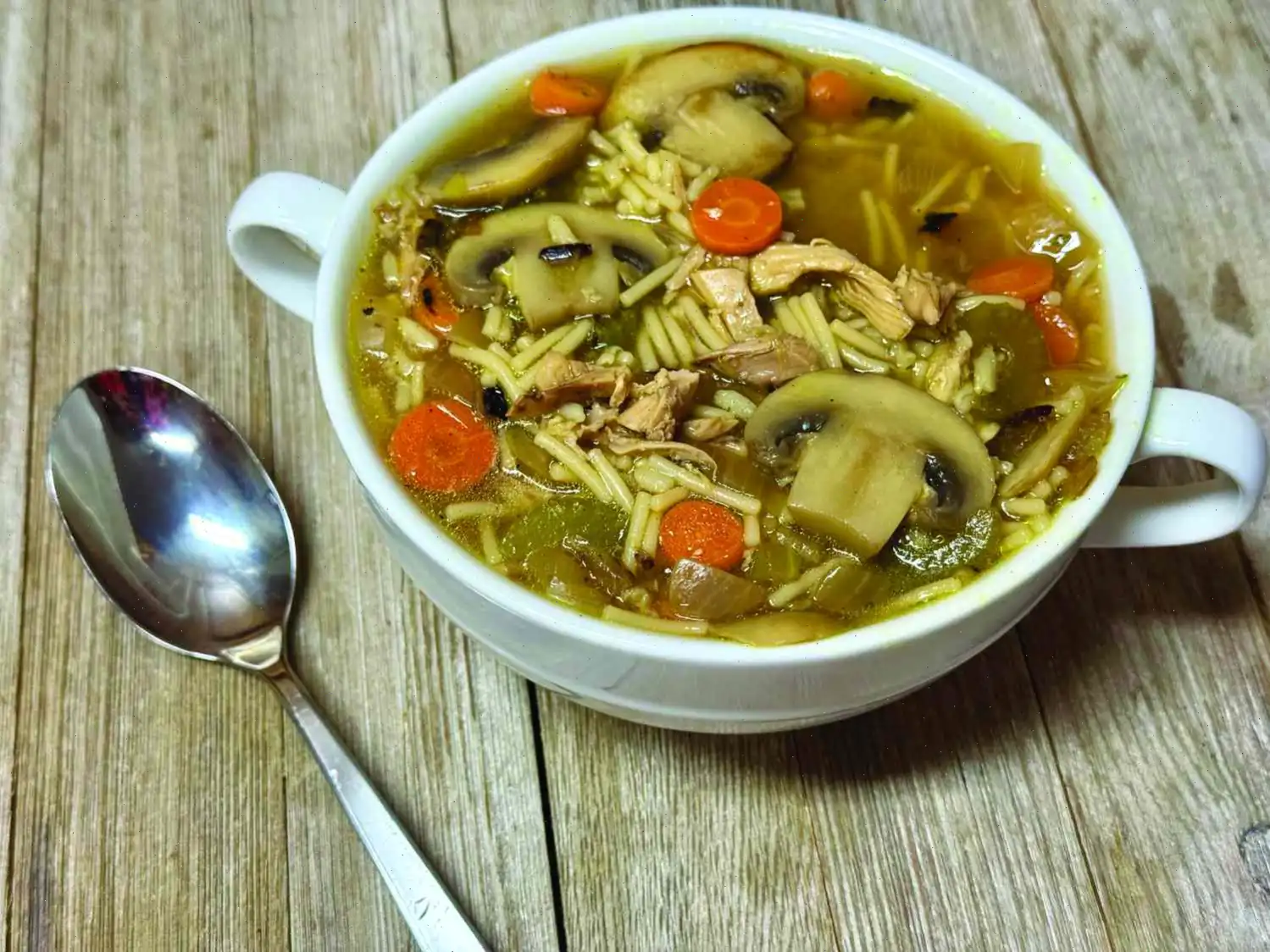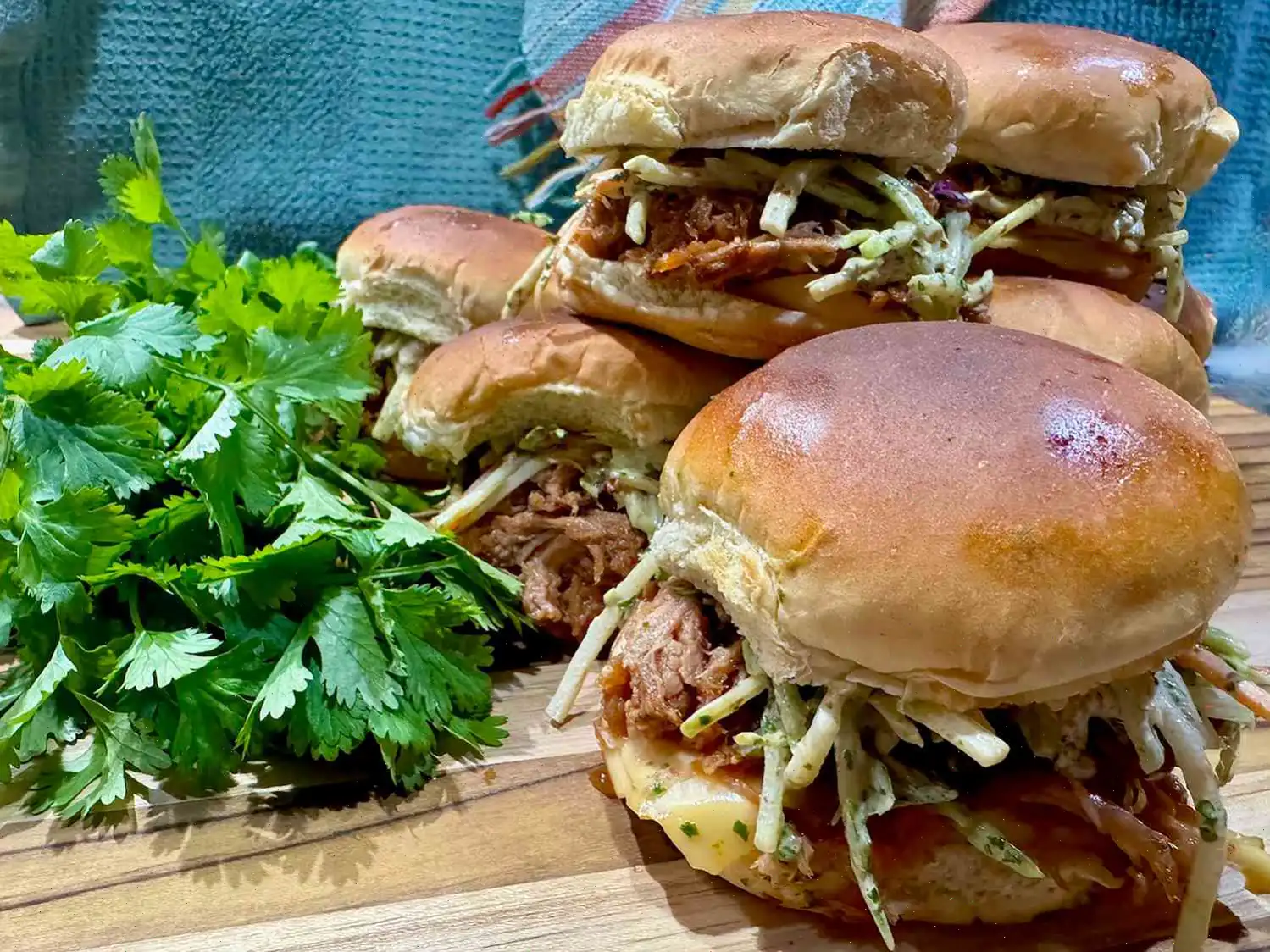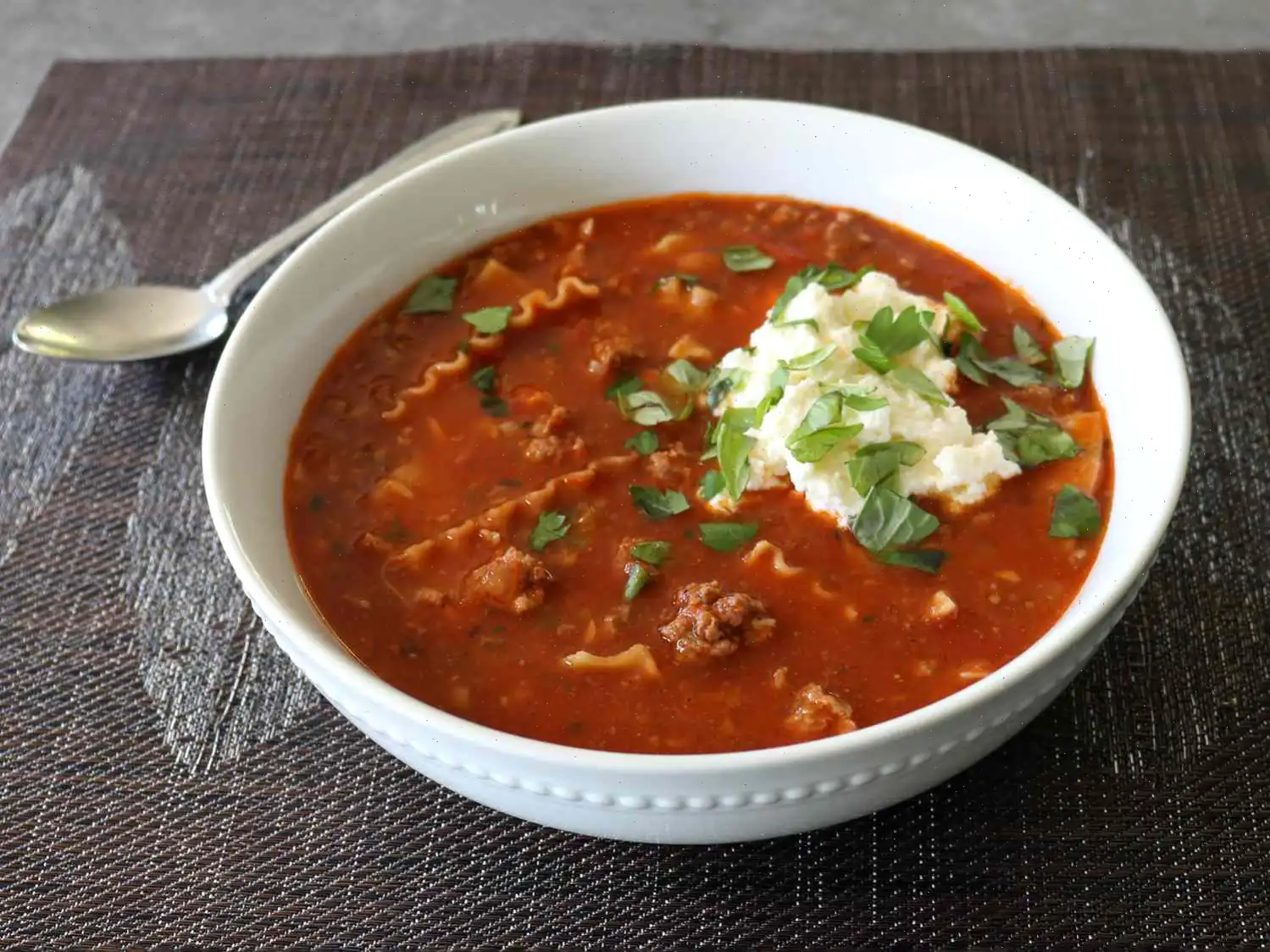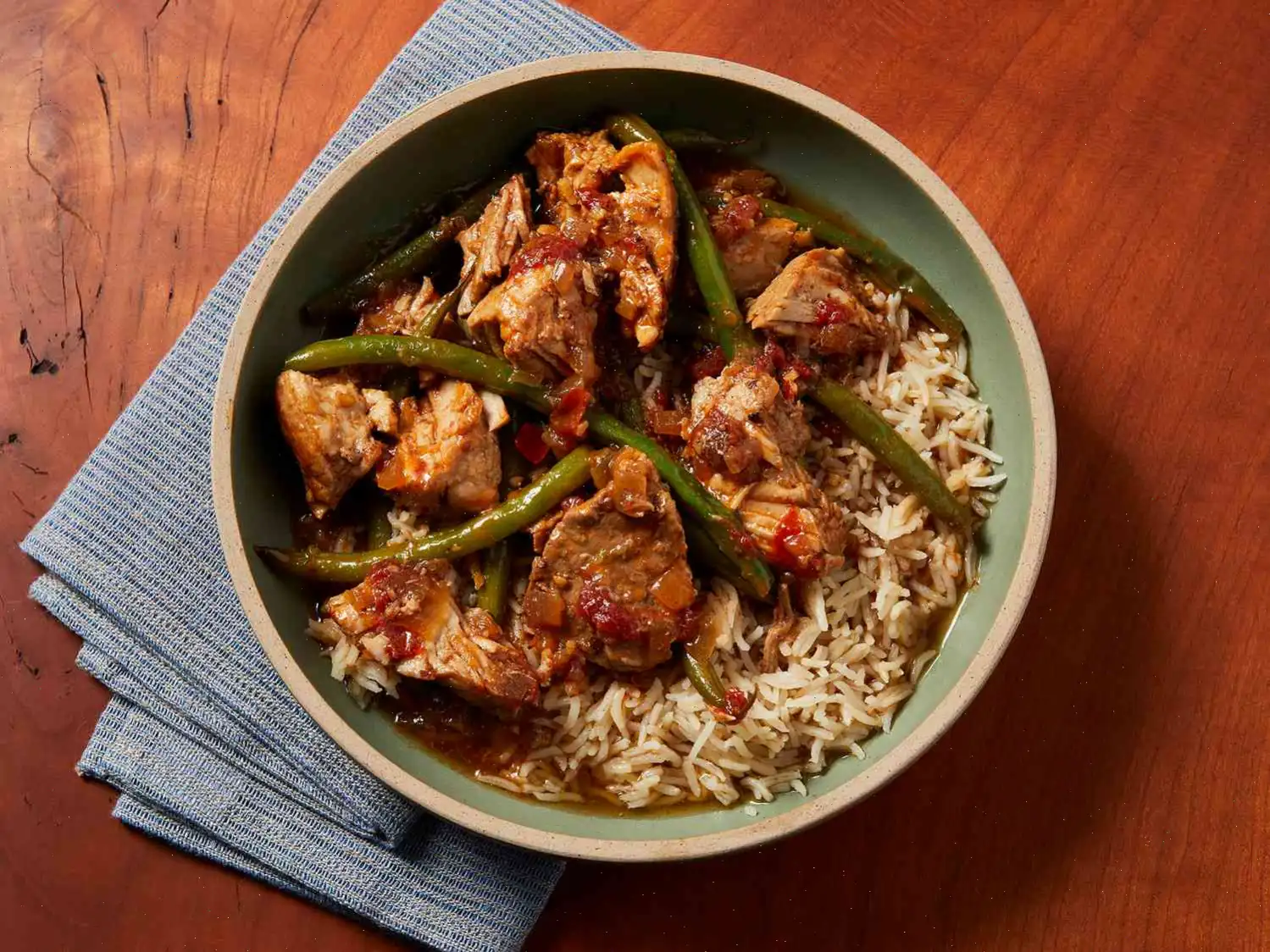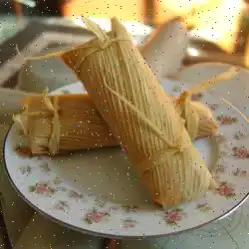
Maqluba (Arabic Rice Dish) Recipe
Ingredients
- 7 cups water (or as needed)
- 2 onions, chopped
- 1 tablespoon chopped garlic
- 1 teaspoon ground cinnamon
- 1 teaspoon ground turmeric
- 2 teaspoons garam masala
- 1 pinch salt and ground black pepper, to taste
- Cooking oil, as needed
- 1 pound lamb meat, cut into small pieces
- 1 large eggplant, cut into 3/4-inch slices
- 2 zucchini, cut into 1/4-inch slices
- 1 cup broccoli florets
- 1 cup cauliflower florets
- 1 cups jasmine rice
- 1 (16 ounce) plain yogurt
Directions
Step 1: In a large pot, combine the water, chopped onions, garlic, cinnamon, turmeric, garam masala, salt, and black pepper. Bring to a boil.
Step 2: Once boiling, add the lamb pieces to the pot. Reduce the heat to low and simmer for 15 to 20 minutes, allowing the flavors to infuse. After the lamb is cooked, separate it from the liquid and set aside. Transfer the liquid to a bowl and reserve it for later use.
Step 3: Heat a bit of cooking oil in a large, deep skillet over medium heat. Begin by frying the eggplant slices in a single layer until they are golden brown on both sides. Remove and place the fried eggplant slices on a plate lined with paper towels to absorb excess oil.
Step 4: Repeat the frying process for the zucchini slices, cauliflower florets, and broccoli. Set all fried vegetables aside to drain on paper towels.
Step 5: In a large pot, layer the cooked lamb at the bottom. Follow by layering the fried eggplant, zucchini, broccoli, and cauliflower over the lamb. Add the jasmine rice over the vegetables and meat, gently shaking the pot to ensure the rice settles evenly.
Step 6: Pour the reserved cooking liquid over the rice and vegetables, ensuring that everything is well-covered. If necessary, add more water to cover the mixture completely.
Step 7: Cover the pot with a lid and simmer on low heat for 30 to 45 minutes, or until the rice is tender and the liquid is absorbed.
Step 8: After the cooking time has passed, remove the lid and place a large platter over the pot. Carefully flip the pot so that the dish is inverted onto the platter. Serve the dish with a generous side of plain yogurt.
Cook's Note
If you prefer, you can substitute the lamb with beef or chicken for a different flavor profile.
Nutrition Facts (per serving)
- Calories: 1019
- Total Fat: 78g (100% DV)
- Saturated Fat: 14g (68% DV)
- Cholesterol: 50mg (17% DV)
- Sodium: 152mg (7% DV)
- Total Carbohydrate: 58g (21% DV)
- Dietary Fiber: 7g (24% DV)
- Total Sugars: 11g
- Protein: 24g (49% DV)
- Vitamin C: 35mg (39% DV)
- Calcium: 200mg (15% DV)
- Iron: 3mg (15% DV)
- Potassium: 919mg (20% DV)
* Percent Daily Values are based on a 2,000 calorie diet. Your daily values may be higher or lower depending on your calorie needs.
Maqluba is a rich and flavorful Middle Eastern dish that combines tender meat, spiced vegetables, and rice, all layered together and cooked to perfection. The dishs name, "Maqluba," translates to "upside down," which refers to the unique method of cooking where the dish is flipped onto a serving platter, revealing beautifully stacked layers of rice and vegetables.
History and Origins
The origins of Maqluba are often debated, but it is widely believed to have been created in the Levant region, specifically in Palestine, Jordan, and Syria. It is a dish that was historically prepared for special occasions due to the use of meat, which makes it a feast-worthy meal. It is said that Maqluba was first made by peasants who would use whatever ingredients they had on hand to create a one-pot meal, with the name reflecting the way it was flipped once cooked. The dish is also considered a comfort food and is often prepared during family gatherings or festive events.
Regional Variations
Maqluba is enjoyed across the Middle East, but each region adds its own twist to the recipe. In some variations, lamb is used as the meat of choice, while others may include chicken or beef. Vegetables like cauliflower, eggplant, zucchini, and tomatoes are commonly used, but different areas have their own preferences. For example, in Jordan, you might find Maqluba made with a richer mix of vegetables, while in Palestine, the dish might be seasoned with more spices such as allspice and cinnamon. The type of rice used also variesBasmati rice is often favored for its aroma and texture, but Jasmine rice is another popular choice.
How It Differs from Similar Dishes
Maqluba is often compared to dishes like pilaf or biryani, but there are a few key differences. Unlike biryani, which typically layers meat and rice before cooking, Maqlubas ingredients are arranged in the pot, then cooked together before being flipped. This "upside down" method gives Maqluba a unique presentation and texture. While pilaf is a simpler rice dish often served without vegetables or meat, Maqluba incorporates both into a hearty, filling meal. The seasoning in Maqluba also tends to be more complex, with the use of spices like cinnamon, turmeric, and garam masala that impart a distinctive flavor to the dish.
Where Is Maqluba Typically Served?
Maqluba is a popular dish served during special occasions such as weddings, holidays, and large family gatherings. It is often prepared when there are many guests to feed, as the recipe yields a generous amount of food. In many Middle Eastern homes, it is also a traditional dish served during Ramadan, where families gather to break their fast with a hearty meal. It is usually accompanied by a side of yogurt or a fresh salad to balance out the richness of the dish.
Interesting Facts About Maqluba
- Maqluba is traditionally cooked in a large pot, which is then flipped onto a serving platter. This dramatic presentation adds to the excitement of the meal.
- The dishs origins are believed to date back to the 13th century, although variations of rice-based layered dishes have been prepared in the region for centuries.
- In some regions, Maqluba is prepared with additional ingredients like pine nuts or almonds, which are sprinkled on top for extra crunch and flavor.
- Some families have their own secret spice blends that they add to the dish, making each version of Maqluba slightly different in taste.
- While lamb is the most common meat used, Maqluba can also be made with chicken, veal, or even beef, depending on the region and personal preference.
FAQ about Maqluba (Arabic Rice Dish) Recipe
Comments
Dennis Hernandez
04/24/2024 08:46:09 PM
As the original author of this recipe, I must say that the version presented here has been significantly altered from my original submission. I recommend using around 5 cups of water, possibly adding an extra cup as needed to ensure the rice is adequately covered when simmering on the stove. Chicken or veal can be excellent substitutes for lamb in this dish. When frying the eggplant, try to avoid overlapping the slices, although it won't make a huge difference in the final outcome. Some reviewers have suggested that the cooking time is too long; using jasmine rice typically takes about 30 minutes, but adjust based on your preferred rice variety. While the preparation may be lengthier compared to other dishes, it is not overly challenging and definitely worth the effort every time! =) P.S. A helpful tip to expedite preparation is to use frozen vegetables.
Christopher Parker
02/02/2023 04:07:34 AM
Years ago, I had the pleasure of trying a delightful dish at a friend's house. Her mother, who hailed from an Arabic background, prepared a dish that has left me curious about its name and preparation ever since. While this recipe was an adaptation of the original, I made a few tweaks to suit my taste preferences. I omitted the cauliflower and broccoli, ingredients not commonly found in Middle Eastern cuisine. Instead of frying the vegetables in oil, I opted to sauté them in a tablespoon of butter. When following this method, I suggest starting with the zucchini and then adding more butter or oil before sautéing the eggplant, as it tends to absorb oil quickly and may become soggy if not handled properly. I used basmati rice which cooks faster than other varieties. While the original recipe called for 7 cups of water, I found that 5 cups were sufficient. I recommend using 3-4 cups if your rice cooks quickly, and allowing it to simmer uncovered for at least 10 minutes to ensure the rice absorbs the water completely. Despite these modifications, my family and I thoroughly enjoyed this dish. To enhance the flavors, I garnished it with cayenne pepper and dried mint, which I felt complemented the dish well. Thank you for sharing this recipe!
Jessica Rivera
03/14/2025 02:00:12 AM
My spouse is from the Middle East, and we regularly prepare this dish. We choose to include only eggplant and cauliflower in our version. After frying the vegetables, it's important to season them with salt before layering them with rice. We opt for basmati rice, which we soak in hot water for 20 minutes to soften. After draining the rice, we mix it with salt and the same spices used in the meat preparation - combined with the meat juices, this should provide enough flavor for those concerned about seasoning. I've tried this recipe with both lamb and chicken, and both variations are delightful. To finish, we sauté pine nuts or almonds and sprinkle them on top along with freshly chopped parsley after flipping the dish.
Kimberly Torres
10/30/2022 03:14:14 PM
Slightly excessive on the rice quantity for our liking. We paired it with roasted eggplant, cauliflower, and tomato, and the seasoning was pleasant. To allow the veggies to stand out more, we may use only 1/2 to 1 cup of rice next time.
Jason Flores
12/22/2023 11:26:20 PM
Slightly excessive on the rice for our taste. We prepared it with roasted eggplant, cauliflower, and tomato. The seasoning was delightful. For next time, we will try using only 1/2 to 1 cup of rice to allow the vegetables to stand out more.
Robert Gomez
01/21/2023 06:16:14 AM
This dish is amazing! While it's not the usual choice, I've also tried making it with Freekeh instead of rice, and it turned out fantastic.
Mark Jones
02/10/2023 11:57:50 AM
I decided to add extra rice to my meal and I'm serving it with pita bread.
Dorothy Scott
03/24/2023 05:57:08 PM
I made the mistake of including all of the reserve liquid, not realizing it was too much. As a result, my rice turned into mush instead of remaining distinct grains after it simmered off. Next time, I will be sure to use less liquid to enhance the flavor and preserve the texture.
Betty Ramirez
09/05/2022 07:27:58 PM
I came across this recipe while searching for ways to use up some vegetables in my fridge. It was simple to prepare and incredibly tasty. I might experiment next time by skipping the step of frying the vegetables initially, as it turned out slightly soggy and oily, but overall, it was absolutely delicious.
Nancy Baker
09/20/2023 01:55:55 PM
Review: The dish was quite flavorful, although it turned out to be more moist than I had anticipated. I recommend letting it rest in the pot upside down for a while before serving. However, preparing it was a bit time-consuming. That being said, the leftovers were absolutely delicious!
Justin Cruz
03/10/2023 01:04:57 PM
The dish didn't meet my expectations. I added chicken, mushrooms, carrots, and one Maggie cube. The flavor resembles that of an Indian dish - perhaps reducing the amount of garam masala would help.
Melissa Martin
02/04/2024 08:16:01 PM
Excellent recipe! It was a big hit with everyone. I opted to use just eggplant and zucchini, omitting the other vegetables.
Joseph Flores
01/06/2025 05:38:58 AM
This dish is fantastic! My husband, who is from Jordan, absolutely adored it. I have to confess that it required some effort to prepare, but the end result was definitely worth it!
Paul Jackson
12/17/2024 05:06:03 PM
I am thrilled to have stumbled upon this recipe! My Jordanian mother-in-law prepares a similar dish with various variations - sometimes using chicken and cauliflower only, and occasionally including lamb. She attempted to explain the recipe to me (which seems to match this one exactly), but she didn't have the measurements. I am excited to try this out - it looks delicious! I particularly enjoy it with just chicken and cauliflower because I'm not a fan of lamb.



